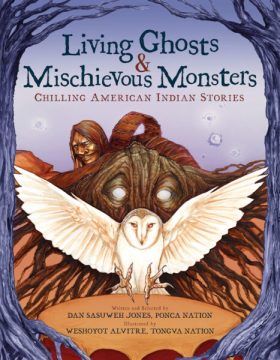By Robyn Gioia, M.Ed
 Constitution Day, September 17, 1787: The day the U.S. Constitution was signed by founding fathers such as George Washington, John Adams, Benjamin Franklin, Alexander Hamilton, Thomas Jefferson, James Madison, and John Jay at the Constitutional Convention in Philadelphia.
Constitution Day, September 17, 1787: The day the U.S. Constitution was signed by founding fathers such as George Washington, John Adams, Benjamin Franklin, Alexander Hamilton, Thomas Jefferson, James Madison, and John Jay at the Constitutional Convention in Philadelphia.
What began as newspaper comic strips in the late 1800s evolved into stories spanning several pages. From there, stories grew into the superhero genre with the likes of Superman and Batman, to name a few. Later the word “graphic novel” was coined for depicting larger works that can be more serious in nature. Since then, graphic novels have grown to represent every form of genre, from entertainment to nonfiction to academically examining controversial topics such as the Constitution.
 The Constitution, a document that was written in the 1700s and for a different time in history remains the heart of American law. Many argue the Constitution needs to be rewritten. The graphic novel fault line in the constitution takes middle school kids through the history and nuts and bolts of the Constitution in easy to understand scenarios and graphics. It is definitely a topic that makes you question the way things work and how you think about them. The book has garnered “starred” reviews from top book reviewers such as Kirkus, School Library Journal, Booklist, and Publishers Weekly.
The Constitution, a document that was written in the 1700s and for a different time in history remains the heart of American law. Many argue the Constitution needs to be rewritten. The graphic novel fault line in the constitution takes middle school kids through the history and nuts and bolts of the Constitution in easy to understand scenarios and graphics. It is definitely a topic that makes you question the way things work and how you think about them. The book has garnered “starred” reviews from top book reviewers such as Kirkus, School Library Journal, Booklist, and Publishers Weekly.
Meet Cynthia Levinson, teacher, writer, mentor, and author of the middle-grade graphic novel, fault line in the constitution.
(Yes, fellow teachers, the book title does NOT use capitals!)
Robyn: Welcome to From The Mixed Up Files. Please tell us a little bit about yourself. It’s always fun to connect a person’s life with their books.
Cynthia: I have two daughters, two SILs, and four grandchildren. And every book my husband and I write includes a thank you to “our thoroughly splendid children,” regardless of whether or not they helped with the book! For most of my professional life, I worked in education—teaching from K-12 and higher ed and also in state-level education policy. As a writer, I still consider myself an educator. I like to cook, but only in spurts; otherwise, a kitchen-sink salad is my favorite dinner. Nothing with okra—blech.
Robyn: A good salad. Someone after my own heart. I’d pass on the okra, too! So tell me, why write a middle-grade graphic novel on the U.S. Constitution?
Cynthia: The idea to write Fault Lines in the Constitution came from one of my editors—Kathy Landwehr at Peachtree, who had given her father a copy of one of my husband’s books (a law professor) on the Constitution. He liked it so much that Kathy asked if we would write a version for kids. Our editor at First Second/Macmillan, Marc Siegel, requested a graphic novel version! So, happily, the ideas came to us from publishers.
Robyn: How did you choose what topics to include?
Cynthia: Great question! How on earth did we?! Well, my husband, Sanford (Sandy), has written extensively on problems with the US Constitution so I began by reading his books more closely and winnowing his massive knowledge base to kid-size bites. We introduce each of the 20 issues in the book with a true story. For instance, we begin the chapter on habeas corpus—the right that the Constitution gives Americans to be released from prison if the government cannot show a cause—with a story about a pandemic. See Resources for Teachers.
Ro byn: How does a topic on the Constitution relate to middle grade kids?
byn: How does a topic on the Constitution relate to middle grade kids?
Cynthia: Although it might seem that the Constitution has nothing to do with middle-graders, that’s not such a tough question. Our government—especially, the way it fails to operate these days, thanks to our Constitution—affects kids’ lives from what they eat for lunch (that’s Chapter Two, called “Big States, Little Say: The Senate”) to whether they have to be vaccinated (Chapter 19) to whether they can vote (Chapter 8). Fault Lines makes abundantly clear the relationship between the Constitution and everyone’s everyday lives.
Robyn: Well, your book has certainly given us a lot to think about. Thank you very much for introducing us to your middle grade, graphic novel fault line in the constitution. Readers will be happy to know there is a plethora of resources available, everything from a teacher’s guide, to lesson plans, to a blog.
Resources are plenty and interesting! The Blog delves into topics such as:
Your Turn! How Would You Write a New Constitution?
What’s a Vice President To Do?
Resources:
Discussion guides and Activities (Peachtree teacher guide)
Standards based lessons
Games
Interviews
Presentations
Websites
Bibliographies







